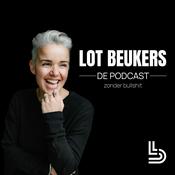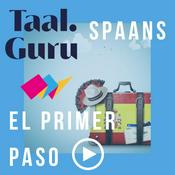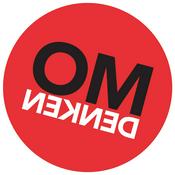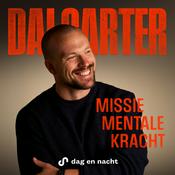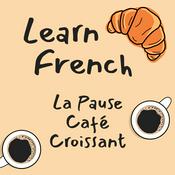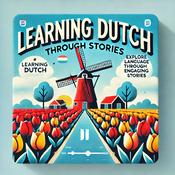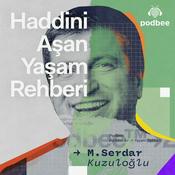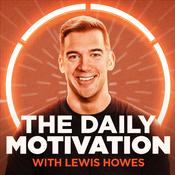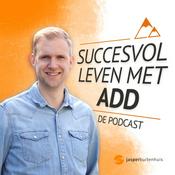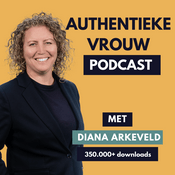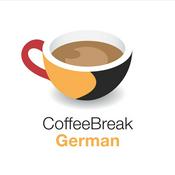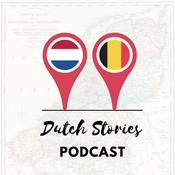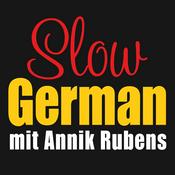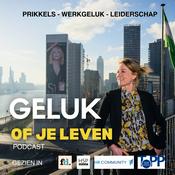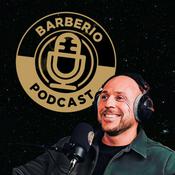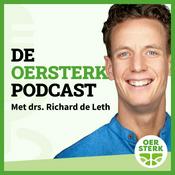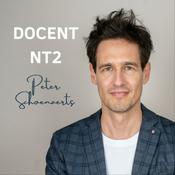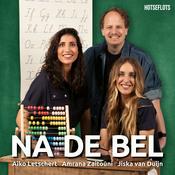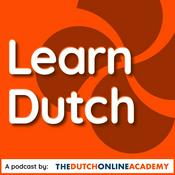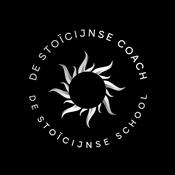219 afleveringen

720 — Stud Dog Marathon: How Often Is Too Often?
05-1-2026 | 48 Min.
Stud Dog Marathon: How Often Is Too Often? Laura Reeves is joined by canine reproduction expert Dr. Marty Greer to answer a listener’s question: how frequently can you breed a stud dog before semen quality starts to decline? Marty breaks down basic stud dog anatomy, what impacts semen production and why timing matters more than sheer frequency. You’ll learn the ideal collection schedule for peak semen quality, how overuse can show up in a semen evaluation, and why progesterone timing is essential when multiple bitches are lined up. Marty also shares practical tips for supporting your stud dog through heavy breeding demand, plus smart strategies for semen collection, shipping, and long-term genetic preservation. ✅ 1) Feed for Fertility (and don’t unbalance it) Heavy breeding demand is hard work metabolically, and Marty stresses that nutrition is the foundation of semen quality. Feed a proven, research-backed diet (she recommendsPurina Pro Plan Sport 30/20orRoyal Canin HT-42D).Avoid “helpful” add-ins that actually disrupt hormones — especiallyflaxseed, because it containsphytoestrogens.Don’t over-supplement. Most fertility supplements havelittle science behind them, and people often unintentionally unbalance an already complete diet. Bottom line: a balanced, consistent diet supports semen volume, motility, and longevity.

719 — Amy Rutherford on Smooths, Bred-By Success and Preservation Breeding
29-12-2025 | 45 Min.
Amy Rutherford on Smooths, Bred-By Success and Preservation Breeding [caption id="attachment_14897" align="alignleft" width="961"] Amy Rutherford winning Best Bred By Exhibitor at AKC National Championship with Wager.[/caption] Today’s episode brings you a rare conversation with someone who does not say yes to interviews very often. Amy Rutherford joined host Laura Reeves for a holiday visit and the timing could not be better, fresh off her Best Bred-By Exhibitor win at the AKC National Championship with her Smooth Fox Terrier, Wager. For breeders, exhibitors, and dog show fans, this conversation delivers real insight into what it takes to build a program that lasts. From a childhood dog show moment to a lifetime in terriers [caption id="attachment_14896" align="alignleft" width="356"] Rutherford with one of her foundation Smooth Fox Terriers.[/caption] Amy’s path started early. Her parents were horse people who also kept Australian Shepherds before they were AKC recognized. A winter trip turned into a defining moment when the family got snowed in and visited an AKC dog show. From the stands, young Amy watched Smooth Fox Terriers in the ring and knew she wanted that life. The journey was not immediate. Her first breed was Airedales, which taught hard lessons about grooming, structure, and realistic expectations. Eventually, she saved money and purchased Smooth Fox Terrier puppies that both finished quickly and became group winners. That early success did more than build confidence. It created a foundation and one of those early bitches still anchors the pedigree behind her dogs today. The handler apprenticeship that built a career Amy’s handling career developed the way the best ones often do, through years of real work. She spent summers helping professionals and then committed to a full apprenticeship with Eddie and Leslie Boyes. She stayed for nine years, learning the daily realities of conditioning, presentation, animal husbandry, trimming and the logistics that define show life. [caption id="attachment_14894" align="alignright" width="278"] Rutherford showing Dover, Ch. Aimhi Type Cast, at Westminster Kennel Club.[/caption] That apprenticeship is a major takeaway for anyone interested in becoming a professional handler. Amy explains that experience builds skill and it builds a network. When she went out on her own, she had the credibility and connections that make the difference between surviving and thriving. Showing different breeds and winning with controversial dogs One of the most valuable parts of this episode is Amy’s honest discussion about stepping into breeds that are not part of your original comfort zone. She moved from Smooth Fox [caption id="attachment_14898" align="alignleft" width="396"] Rutherford showing Standard Poodle, Dino, GCH. Del Zarzoso Salvame From Afterglow[/caption] Terriers into coated breeds including a Portugese Water Dog and a Standard Poodle import....

718 — Purebred Dogs: Living History on Our Couch | A Year-End Reflection
22-12-2025 | 24 Min.
Purebred Dogs: Living History on Our Couch | A Year-End Reflection As we come to the close of another year — one that has been long, challenging, and filled with upheaval both globally and within the purebred dog fancy — it felt right to pause, reflect and remember why we do what we do. One of the great comforts of purebred dogs is their reliability. No matter what else is happening in the world, somewhere nearby there is a dog event — a show, a trial, a hunt test, a training day. These gatherings give us a chosen family: people who console us when times are hard, celebrate with us when times are good, and understand the passion that binds us together. On the Shoulders of Giants In dog breeding, one of my favorite phrases is “on the shoulders of giants.” While famous handlers may get the television time, the true unsung heroes of purebred dogs are the breeders. Breeders are the devoted advocates and curators of living history. Their imagination, vision, commitment, and endurance preserve breeds that represent centuries — sometimes millennia — of human partnership with dogs. And yet, too often, when master breeders pass, their hard-earned knowledge disappears with them. Pure Dog Talk was created, in part, to save and share that irreplaceable wisdom. Through our podcast archives, albums, and seminars, we aim to preserve the voices, stories, and experience of the best and brightest breeders worldwide — so that future generations don’t have to reinvent what has already been learned. Purebred Dogs as Living History Every one of the 200+ breeds recognized by the American Kennel Club — and many more worldwide — represents a specific time, place, and human culture. Purebred dogs are a living, breathing continuum of history. Pedigrees bring that history directly into our homes. Some breeding records trace back thousands of years. Long before formal breed standards existed, early humans were selectively breeding dogs for climate adaptation, specialized diets, hunting ability, and companionship. Recent research has even reshaped our understanding of ancient breeds: TheGreenland Dogis now considered the oldest known dog breed, tracing back to the Pleistocene era.Basenjis, depicted in cave art dating to 6,000 BC, possess uniquely distinct DNA.Greyhoundsdescribed in a 15th-century poem still match the breed standard today — and every modern Greyhound traces back to a single dog whelped in England in 1839.Bedlington Terriersboast the oldest unbroken terrier pedigree, dating to 1782.Ancient breeds like theChow...

717 — Showing Dogs on a Shoestring Budget
15-12-2025 | 41 Min.
717 -- Showing Dogs on a Shoestring Budget Smart Strategies for Budget-Friendly Success in the Conformation Ring By Laura Reeves • Pure Dog Talk Pure Dog Talk is the voice of purebred dogs. We bring you conversations with legends of the sport and offer practical, actionable guidance for creating an extraordinary life with your purebred dog. In this episode, host Laura Reeves dives into a timely and essential topic: how to show dogs effectively without breaking the bank. Introduction: Making Dog Shows Work in Expensive Times Dog shows are more plentiful than ever—but the costs are rising. Entry fees, fuel, lodging, grooming supplies, and time away from work or family can quickly turn a joyful hobby into a financial strain. Showing on a shoestring doesn’t mean cutting corners—it means strategizing, choosing wisely and investing where it matters most. As Laura says, “Your passion is our purpose.”These tips will help you maximize results while minimizing expenses. 1. Start With a Clear Goal Before entering a single show, determine exactly what you want to accomplish: Finishing a ChampionshipYou must attend shows with reliable breed entries.Earning a Grand ChampionshipPrioritize majors and competition.Ranking in Breed or Group StandingsBreed rankings require breed entries; group rankings require competitive groups. “You can’t make a plan until you make a goal.” Knowing your goal drives every decision—from which shows to attend to how far you should travel. 2. Research Shows and Judges Like a Pro Not every show is equal, and not every judge appreciates the same breed style. Tools to Use InfoDog— view historical entries in your breed and regionAKC Judges Directory— review judges’ assignment histories and past...

716 – Hunting for Raccoons and Ribbons with Border Terriers
08-12-2025 | 45 Min.
Hunting for Raccoons and Ribbons with Border Terriers [caption id="attachment_14799" align="alignleft" width="376"] Karen Fitzpatrick with one of her Meadowlake Border Terriers.[/caption] Host Laura Reeves is joined by Karen Fitzpatrick from Meadowlake Border Terriers to talk about hunting raccoons and ribbons. “My background honestly was straight hunting,” Fitzpatrick said. “I hunted long before I ever bought a Border. I started here in the US and then started hunting in the UK, met people there. I just love the hunting aspect of Border Terriers. “Border Terriers are still very high on the list for hunting instinct and actually are still made to do the job they were bred to do. “In the middle of winter, we did a lot of barn hunting, and that was just literally clearing out haylofts of raccoons. In this deep, deep snow like today, you would hit a big barn, cut a few terriers loose in a loft and woo, come on. It was crazy. “We did a lot of in ground hunting during the spring and fall, but we tried to not do too much in the spring, mostly because of a lot of groundhogs having babies. Fall is the better time because they're big and fat and getting ready to hibernate and the holes are bigger.” Fitzpatrick has produced 170 champions and 12 best in show winning Border Terriers, including the top winning bitch in the breed. She was named AKC’s Sport Breeder of the Year in 2014 and Terrier Breeder of the Year in 2018, one of a handful of breeders honored in both conformation and performance. “They have to be able to function and do their job and my belief, back then as it is today, they can be beautiful and still do their job and that is what I have absolutely brought through and I will continue it.”
Meer Onderwijs podcasts
Trending Onderwijs -podcasts
Over Pure Dog Talk
Luister naar Pure Dog Talk, Eerlijk over alcohol en vele andere podcasts van over de hele wereld met de radio.net-app

Ontvang de gratis radio.net app
- Zenders en podcasts om te bookmarken
- Streamen via Wi-Fi of Bluetooth
- Ondersteunt Carplay & Android Auto
- Veel andere app-functies
Ontvang de gratis radio.net app
- Zenders en podcasts om te bookmarken
- Streamen via Wi-Fi of Bluetooth
- Ondersteunt Carplay & Android Auto
- Veel andere app-functies


Pure Dog Talk
download de app,
luisteren.



